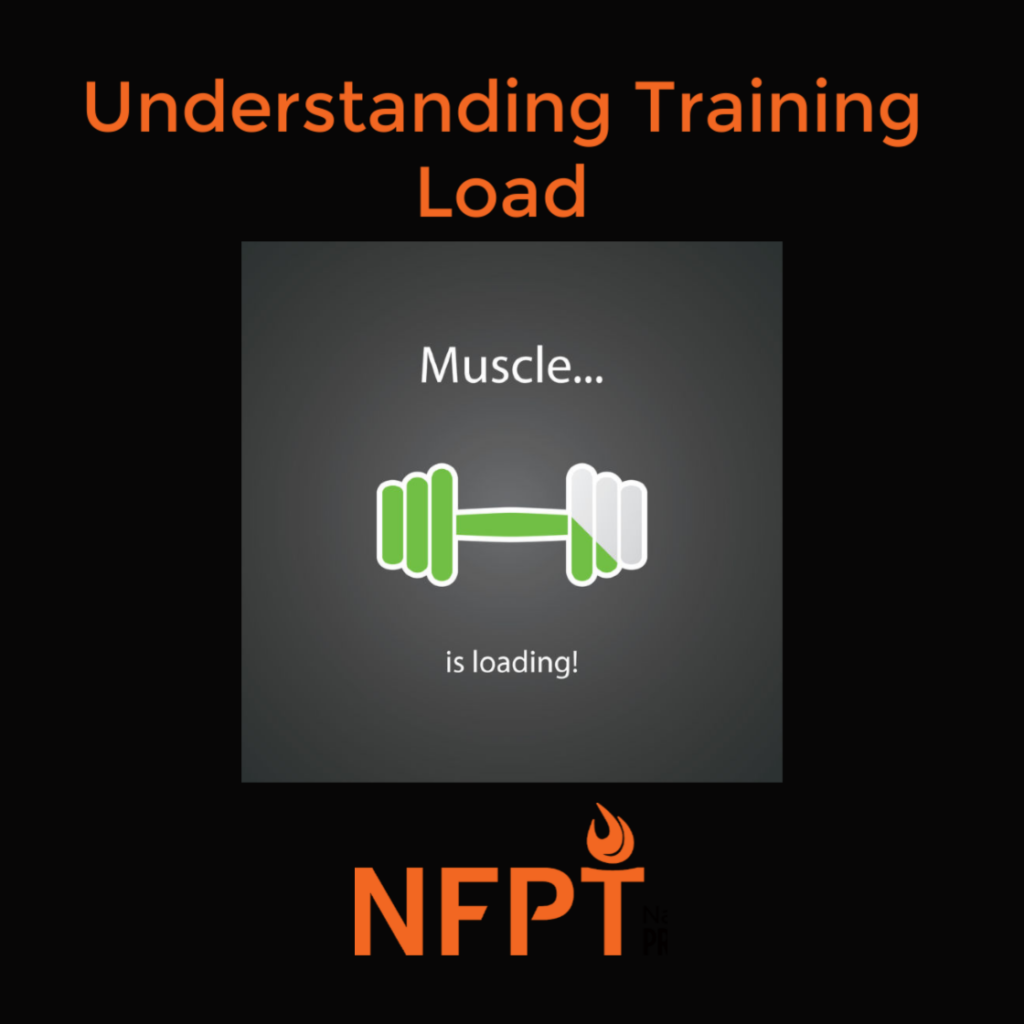The theory of exercise states that by placing a strain upon the body, followed by proper recovery, one can make his body stronger. The principle of training load encompasses the amount of strain placed on the body via activities performed over time. The ultimate goal? Understanding and thereby creating improved scientific load management strategies for results, regardless of a client’s level of fitness performance. Such management allows one to train harder, pushing to her limits and then through them, while remaining within her scope of productive effort.
“Training load is the difference between a blister and a callous. Too much too soon and you get pain and injury, but little and often and you get a resilient tissue.”
~ Kris Borthwick
Quantifying Load
Training load can be thought of as Volume x Intensity, thereby creating a picture of the effects of a specific load, over time or within a single workout. These can be categorized as follows:
- No effect at all – useless load
- Recovery effect – minimal load used for recovery sessions
- Maintaining effect – no increases or decreases in performance observed
- Developing effect –high enough load to produce improvements in performance
- Overload effect – too high of a training load leads to less-than-stellar performance
Training Load Versus Volume
Training load differs qualitatively from training volume, which refers to length of time spent training or even distance covered. For resistance training, it is a matter of reps x sets x weight.
While two runners may both train for a total of 200 hours in a given time frame (training volume), they can differ greatly in their cumulative load by working at different intensities, perhaps using heart rate ranges to measure that intensity.
A client who has done 3 sets of 12 reps of 100lb cable rows (a total volume of 3600lbs) while training at a higher volume than the client who has done 4 sets of 5 reps of 150lb cable rows (a total load of 3000lbs) exhibits a lower load since each rep was less intense.
It stands to reason that the harder one’s workout, the more significant the load. Most elite athletes and coaches structure workouts to include days of longer training at a lower intensity mixed in with shorter workouts bearing a greater load.
Targeting With Technology
Training load enables fitness professionals – from exercise physiologists to sports scientists – to maximize an athlete’s potential while minimizing injury. Recently, the creative minds who design tracking devices such as Smartwatches and cycling computers have come up with methods of recording the impact of one’s activities.
Wind sprints, cycling/coasting, and HIIT provide excellent examples of pushing our bodies through various intensity levels for specific amounts of time. During such movements, tracking the training load provides a glimpse into the true impact of the exercise, or what is “felt” by the body, at any given time throughout the workout session.
Most tracking-type devices deliver numbers based upon EPOC, or the body’s excess post-exercise oxygen consumption. The term applies to the amount of oxygen the body utilizes after a workout as it attempts to restore homeostasis. Exercise physiologists view EPOC as the best way to measure the degree of physiological “disturbance” an activity elicits.
HRV tracking is another emerging tool that measures the variance between your heartbeats over time, providing a data-backed indication of whether recovery is necessary and/or intensity should be limited on a particular day, based on the person’s trends over time.
Taking advantage of the ability to see and understand the cumulative impact on the body from various activities offers one the reassurance that adequate and sufficiently challenging movements occur. Excessive exercise leads to counterproductivity, increased injury risk, and with time, can lead to overtraining syndrome. At the opposite end of the spectrum, but of equal importance, intensity needs may require ramping up in order to achieve the desired results or any results at all, for that matter
If you train clients who choose not to track their workouts with gadgetry, successful sessions can remain a top priority. We know how to intersperse heavy days with light, compliment large muscle workouts with smaller non-assistor muscles with accessory movements, and utilize RPE and “talk tests” to ensure our clients work in the appropriate range of intensity.
For those with FitBits and cycling computers, a brief explanation of training load can help enrich their understanding of the true impact of their exercises. Such a framework helps many individuals remain focused, especially on days when they feel less than 100% energized.
References:
https://www.ncbi.nlm.nih.gov/pmc/articles/PMC4213373/
academy.sportlyzer.com/wiki/training-load/
https://sporttracks.mobi/blog/predicting-fitness-performance-training-load
https://sporttracks.mobi/blog/training-load-science-history-and-application
https://sporttracks.mobi/blog/reading-the-training-load-charts-example-scenarios
https://www.ncbi.nlm.nih.gov/pmc/articles/PMC6201138/
kinesiologycontent.com/the-optimal-training-load-for-the-development-of-muscular-power/
www.sports-training-adviser.com/overloadprinciple.html




